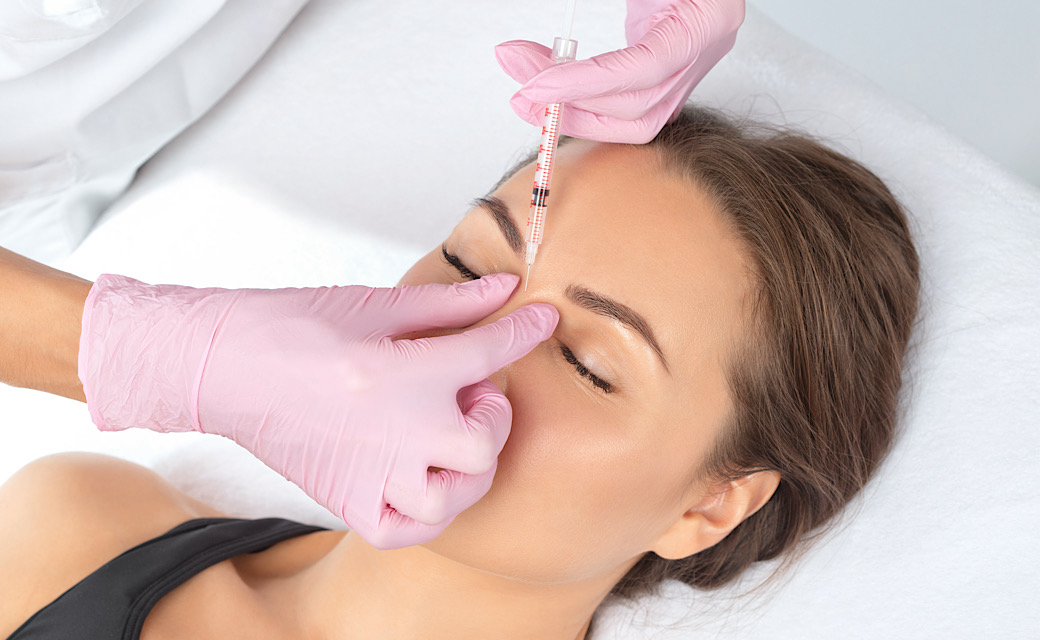Botox, a widely recognized cosmetic treatment, has gained popularity for its ability to reduce the appearance of facial wrinkles and fine lines. If you’re considering facial rejuvenation, understanding the benefits of Botox can help you decide if it’s the right choice for you. This article delves into the advantages of Botox treatments, the procedure process, and why many people choose Botox for their cosmetic needs.
What is Botox?
Botox, short for botulinum toxin, is a neurotoxic protein that is used in small doses to treat various medical and cosmetic conditions. It works by temporarily paralyzing muscles, which smooths out wrinkles and prevents the formation of new lines. Originally used to treat medical conditions such as muscle spasms and excessive sweating, Botox has become a staple in cosmetic procedures for its effectiveness in facial rejuvenation.
Key Benefits of Botox
Reduction of Fine Lines and Wrinkles
One of the primary benefits of Botox is its ability to reduce the appearance of fine lines and wrinkles. Botox targets specific muscles in the face, relaxing them and smoothing out the skin. Common treatment areas include:
- Forehead lines
- Crow’s feet around the eyes
- Frown lines between the eyebrows
By targeting these areas, Botox can provide a more youthful and refreshed appearance.
Non-Surgical Procedure
Botox is a non-surgical cosmetic procedure, which means there is no need for incisions or anesthesia. This is a significant advantage for individuals looking for a less invasive option compared to surgical facelifts. The treatment involves a series of small injections and typically takes only about 10-30 minutes, making it a convenient option for those with busy schedules.
Quick Results and Minimal Downtime
Patients often notice improvements within a few days of receiving Botox injections, with full results typically visible within one to two weeks. The minimal downtime associated with Botox is another major benefit. Most people can return to their normal activities immediately after the procedure, with only minor restrictions such as avoiding vigorous exercise for the first 24 hours.
Preventative Treatment
Botox is not only effective in treating existing wrinkles but also serves as a preventative measure. Regular Botox treatments can prevent the formation of new wrinkles by reducing muscle activity in targeted areas. This proactive approach can help maintain a youthful appearance over time and delay the signs of aging.
Treatment of Medical Conditions
Beyond cosmetic applications, Botox has several medical benefits. It is used to treat a variety of conditions including:
- Chronic migraines
- Muscle spasms and stiffness
- Hyperhidrosis (excessive sweating)
- Overactive bladder
For individuals suffering from these conditions, Botox can provide significant relief and improve quality of life.
The Botox Procedure
Initial Consultation
The Botox journey begins with an initial consultation with a qualified healthcare provider. During this appointment, the provider will assess your medical history, discuss your aesthetic goals, and determine if Botox is the appropriate treatment for you. This step is crucial to ensure the procedure is safe and tailored to your needs.
The Injection Process
On the day of the procedure, the healthcare provider will cleanse the treatment area and may apply a topical anesthetic to minimize discomfort. Using a fine needle, small amounts of Botox are injected into the targeted muscles. The number of injections depends on the areas being treated and the extent of the wrinkles.
Post-Treatment Care
After the procedure, it is important to follow the provider’s post-treatment care instructions to optimize results and minimize side effects. Common recommendations include:
- Avoiding rubbing or massaging the treated area for at least 24 hours
- Staying upright for a few hours post-treatment
- Refraining from strenuous exercise for the first 24 hours
These precautions help ensure that the Botox remains in the targeted areas and achieves the desired effect.
Choosing the Right Provider
Selecting a qualified and experienced provider is essential for a successful Botox treatment. Look for a healthcare professional who is board-certified and has a proven track record in administering Botox. Reviews and testimonials from previous patients can also provide insights into the provider’s expertise and the quality of care you can expect.
Addressing Common Concerns
Safety and Side Effects
Botox is generally considered safe when administered by a trained professional. However, like any medical procedure, it carries some risks. Common side effects include mild bruising, swelling, or redness at the injection site. These side effects are typically temporary and resolve on their own within a few days.
Duration of Results
The effects of Botox are temporary, lasting between three to six months. Regular treatments are necessary to maintain the results. Some patients may notice that the effects last longer with repeated treatments, as the targeted muscles become trained to remain in a relaxed state.
Cost Considerations
The cost of Botox varies depending on the provider, location, and the extent of the treatment. While Botox is not the least expensive cosmetic procedure, many patients find it to be a worthwhile investment due to its effectiveness and minimal downtime.
Botox offers a range of benefits for those seeking to reduce the appearance of wrinkles and achieve a more youthful look. Its non-surgical nature, quick results, and ability to serve as a preventative treatment make it an attractive option for many. Additionally, Botox’s applications in treating various medical conditions highlight its versatility and value. If you’re considering Botox, consult with a qualified provider to discuss your goals and determine if it’s the right choice for you.

